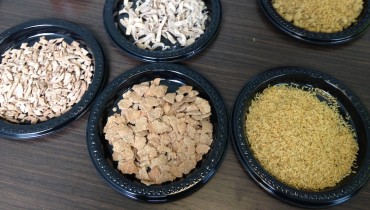
A blooming rooftop garden, or a share in a local CSA. Individual actions add up to change for the better in our fragile world.
A far-off cry in the wind, that’s what the vital issue of climate change has become. Legislation imposing change on carbon-emitting industry drags. American politicians even argue that the U.S. can’t afford to protect the environment – a short-sighted view that will inevitably create a frightening debt to nature. Saving the planet is no longer sexy. The well-fed have turned their attention to problems like obesity and health, issues that hit them where it hurts personally, and pay mere lip service to the world hunger crisis.
Gloomy scenario? Yes, especially for activists expecting political force to rescue the environment and the peoples of the planet. But hunger predictably obliges every person to think about the next meal. And slowly, a grassroots movement is coalescing, harnessing a new strength – people’s desire for locally-grown, sustainable food, as conservationist Gary Nabhan sees it.
Time.com’s writer Bryan Walsh surmises that the new food movement “may be able to create just the sort of political and social transformation that environmentalists have failed to achieve in recent years.”
Walsh’s premise is that pleasure pivots this change in food consciousness. Organic vegetables from your CSA certainly taste like real food should, although it’s still more expensive than the pale, possibly genetically-modified produce you pick up in the supermarket.
But economics are a significant factor in the food movement as well. With the cost of produce soaring everywhere and no predictable price fall in sight, locally grown food and broad agricultural reform are making more and more sense to more and more people. Books like Pinkerton and Hopkin’s Local Food (see our review here) are the guides to the new way of looking at lunch.
Although, according to Time, only 1% of American crops are organically grown today, the signs of the times are clear. They’re in the increasing demand for organic food and drink; in new farmers’ markets springing up; (new farmer’s markets are thriving in the Middle East as well) and in efforts as small as home food-canning courses to communal rooftop gardens to Michele Obama’s nationwide campaign against child obesity. Taking the tip, even big industrial outlets like Walmart are contracting suppliers of sustainable foods.
 Organic Farmers’ Market, Tel Aviv
Organic Farmers’ Market, Tel Aviv
Our hope is that changes to industrial farming will take place as the sustainable food movement grows, becomes politially cohesive, and spreads internationally. With agricultural reform, polluted waterways would heal. With less long-distance transportation, the planet’s carbon emission overload would ease. With fewer denatured food products available, people would gain in health what they lose in the convenience of ripping open a bag for instant gratification.
Maybe it’ll be the foodies, in the end, who will leave a legacy of clean, sustainable food to our kids, and to their kids.
More on the impact of food:
- Interview with Locavore Leda Meredith
- Marda Permaculture Farm
- Canaan Fair Trade Creates Sustainable Palestinian Farmer’s Community
Photo of Felder’s Rooftop Garden by Natalie Maynor via Flickr.
Photo of Organic Farmers’ Market, Tel Aviv, by Miriam Kresh.



